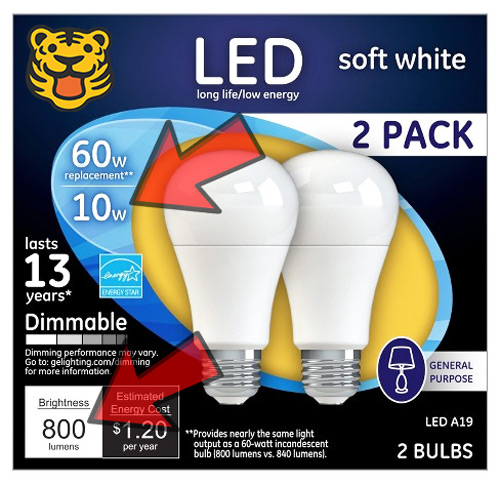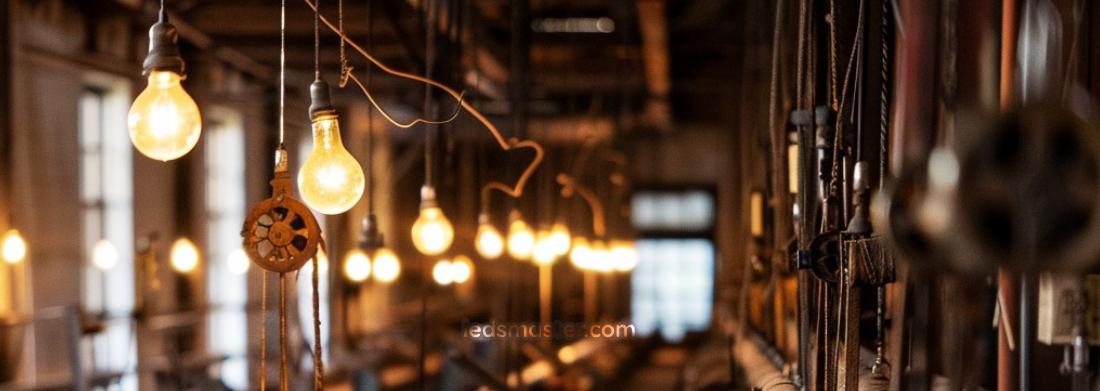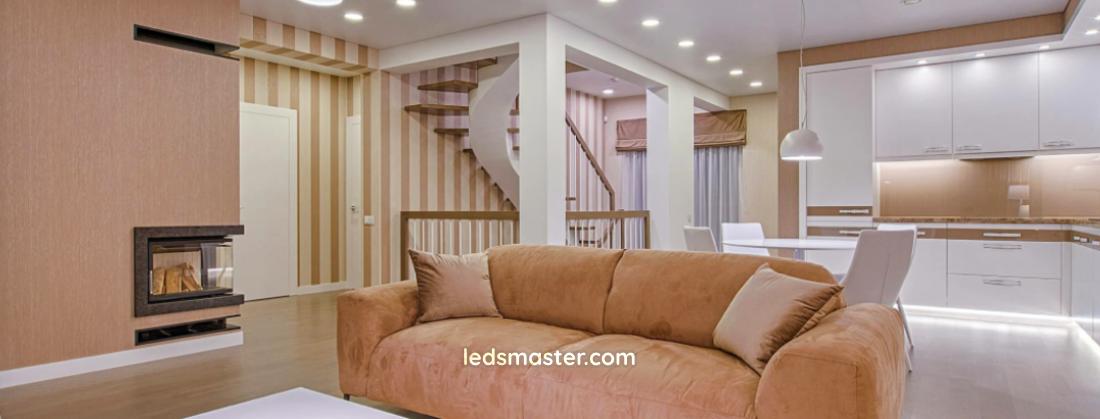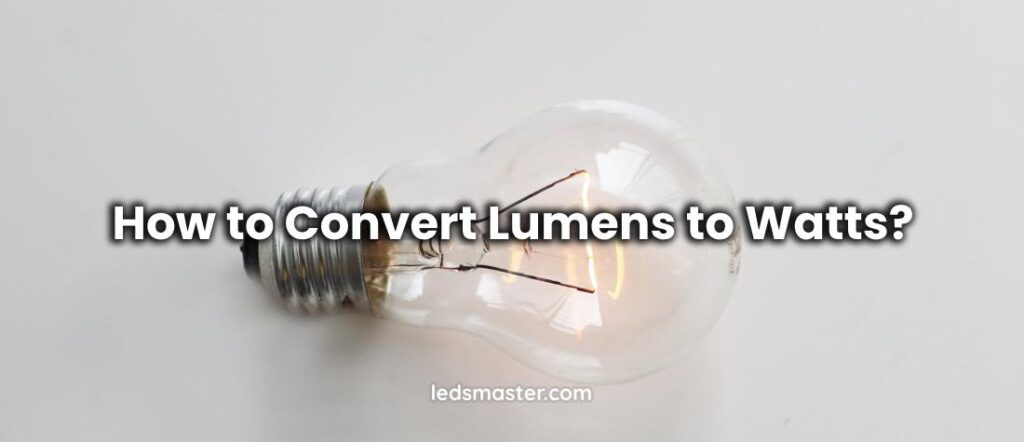When installing a new light fixture, it’s crucial to match the brightness of the original light to ensure consistency. However, this raises the question: How do we convert lumens to watts? This conversion is essential for selecting the right replacement and understanding the relationship between brightness and power.
Table of Contents
ToggleLumen to Watt Calculator
To simplify the process of converting lumens to watts or vice versa, a lumen to watt calculator can be employed. The usage steps are straightforward: firstly, identify the type of conversion needed, whether from lumens to watts or the other way around. Next, input the value you wish to convert, along with specifying the type of light source. Finally, the calculator will promptly generate the corresponding value, providing valuable insights to inform your decision-making regarding light fixture replacement.
It’s important to note that while this tool provides a reference, actual wattage and lumen output may vary between brands.
Understanding Lumens and Watts in Light Bulbs
What is Lumen?

When purchasing a light bulb, many consumers instinctively look at its power rating, often equating higher wattage with increased brightness. However, this approach overlooks a crucial aspect of lighting: the relationship between power (wattage) and brightness (lumens). Lumens are the true measure of a light source’s brightness, providing a more accurate indicator of its illumination capabilities.
Imagine walking into a room lit by two different bulbs: one labeled as a 40-watt LED and the other as a 100-watt incandescent bulb. Intuitively, one might assume that the 100-watt bulb produces brighter light due to its higher wattage. However, this assumption overlooks the efficiency of the bulbs and their actual brightness, as measured in lumens.
In reality, the 40-watt LED bulb may emit significantly more lumens than the 100-watt incandescent bulb, resulting in brighter illumination despite its lower power consumption. For instance, a 40-watt LED bulb with 5200 lumens can provide brighter light than a 100-watt incandescent bulb emitting only 1000 lumens. This discrepancy highlights the importance of considering lumens as the primary measure of a bulb’s brightness rather than relying solely on wattage.
Understanding lumens as a measure of brightness is akin to recognizing horsepower as a measure of a car’s engine power. Just as a higher horsepower rating signifies greater engine output and performance in a car, higher lumens indicate greater light output and brightness in a light bulb. By focusing on lumens rather than wattage, consumers can make more informed decisions when selecting bulbs, ensuring they achieve the desired level of illumination for their spaces while maximizing energy efficiency.
Where Can I Find the Watt and Lumen of a Light Bulb?
When browsing for light bulbs, consumers can typically find essential information regarding lumens and watts conveniently printed on the packaging. For instance, an LED light bulb might be clearly labeled as consuming 10 watts while producing an output of 800 lumens. This straightforward labeling system simplifies the process of selecting bulbs based on desired brightness levels and energy efficiency.
However, it’s crucial for consumers to recognize that the wattage indicated on the packaging, such as “10 watts,” does not solely denote the bulb’s power consumption. Instead, it often serves as a reference point, indicating the bulb’s capacity to replace a traditional incandescent bulb with a comparable brightness level. This distinction is vital because different types of bulbs, such as LEDs or fluorescents, may produce the same amount of light (measured in lumens) while consuming varying amounts of power (measured in watts).
Furthermore, it’s essential to acknowledge that not all the input energy consumed by a bulb is converted into visible light output. A significant portion of energy is lost as heat, particularly in traditional incandescent bulbs, which are notorious for their inefficiency. This discrepancy between input energy and light output underscores the importance of accurately representing a bulb’s brightness through the conversion of wattage and lumens.
Watt vs Lumen
The process of converting lumens to watts involves a straightforward formula: Lumen = Wattage of Bulb x Luminous Efficacy. This equation incorporates an essential factor known as luminous efficacy, which reflects the energy efficiency of the light source. By understanding and applying this formula, consumers can effectively evaluate the brightness output of different bulbs relative to their power consumption.
Consider the example of two bulbs: a LED bulb rated at 10 watts and a halogen bulb also rated at 10 watts. Despite having the same wattage, these bulbs may produce vastly different levels of brightness due to variations in their luminous efficacy.
A LED bulb with a luminous efficacy of 130 lumens per watt would yield a brightness output of 1300 lumens (10 watts x 130 lm/W). In contrast, a halogen bulb with a lower luminous efficacy of 20 lumens per watt would produce only 200 lumens (10 watts x 20 lm/W). This comparison highlights how luminous efficacy directly influences a bulb’s ability to convert electrical power into visible light.
The significance of considering both wattage and lumens becomes evident when selecting light bulbs to achieve desired brightness levels effectively. While wattage indicates the power consumption of a bulb, lumens provide a more accurate measure of its actual brightness output. By prioritizing bulbs with higher luminous efficacy, consumers can maximize brightness while minimizing energy usage, leading to cost savings and environmental benefits.

Watts to Lumens Conversion Chart
To provide a comprehensive understanding of the transition between watts and lumens, let’s examine the following summary chart:
| Halogen Wattage | Halogen Lumen | Equivalent LED Wattage |
|---|---|---|
| 50W | 750 lm | 5.8W |
| 300W | 4,500 lm | 34.6W |
| 500W | 7,500 lm | 57.7W |
| 1,000W | 15,000 lm | 115.4W |
| 1,500W | 22,500 lm | 173.1W |
Upon reviewing the conversion chart, it becomes evident that LED lighting stands out as a more energy-efficient option. This is primarily due to the fact that generating the same lumen output requires only approximately 1/10 of the wattage compared to halogen bulbs.
Lumen & Watt FAQ
How many lumens is a 500-watt bulb?
A 500-watt halogen bulb is commonly used for both indoor and outdoor applications. Our research indicates that a 500W halogen bulb typically emits approximately 5000 to 7500 lumens, varying based on the brand and quality of the bulbs.
If you’re interested in exploring other types of lighting options, refer to the table below for a summary of the lumens output for various 500-watt lighting fixtures:
| Type of 500 Watt Light Source | Lumens |
|---|---|
| Halogen | 7,500 lm |
| LED | 65,000 lm |
| CFL / Fluorescent | 42,500 lm |
| Metal Halide | 37,500 lm |
| Mercury Vapor | 25,000 lm |
| Incandescent | 5,000 lm |
How many lumens does a 60-watt bulb produce?
When comparing the lumen output of different types of bulbs, such as a 60-watt LED and a 60-watt halogen bulb, significant differences in brightness become apparent. A 60-watt LED bulb typically offers a considerably higher lumen output, ranging from 4800 lumens to 7800 lumens. This wide range reflects the variability in brightness among LED bulbs available on the market. In contrast, a 60-watt halogen bulb typically produces around 900 lumens, significantly lower than its LED counterpart.
It’s essential to recognize that these lumen values serve as general estimates and may vary depending on the specific brand and model of the bulb. Different manufacturers may engineer bulbs with varying levels of efficiency and performance, leading to differences in lumen output for bulbs with the same wattage rating.
To identify bulbs with higher energy efficiency, consumers can utilize the information provided on the packaging. Key pieces of information to look for include both the lumens and wattage ratings. By applying the formula for lighting efficiency, which is calculated as Lumens ÷ Watts, consumers can assess the efficiency of a bulb relative to its brightness output. A higher efficiency value indicates that the bulb produces more lumens per watt consumed, translating to better energy efficiency and potential cost savings over time.
What is the brightest lumen?
In commercial settings like sports stadiums or seaports, where expansive areas require high levels of illumination, floodlights play a critical role. These floodlights often have substantial energy requirements, with each light capable of consuming a maximum of 5000 watts. To put this into perspective, the luminous output of such floodlights can be calculated using the formula Lumen = Wattage x Luminous Efficacy. With an assumed luminous efficacy of 130 lumens per watt, each floodlight can produce approximately 650,000 lumens of brightness.
However, advancements in lighting technology have led to even brighter options. For instance, LedsMaster, a leading manufacturer in lighting solutions, offers LED floodlights with exceptional luminous output capabilities. Their 15,000-watt LED floodlights can achieve an astonishing luminous output of around 2,000,000 lumens. This substantial increase in brightness allows for enhanced visibility and safety in large commercial spaces.
In contrast, residential settings like backyards and parking lots have different lighting requirements. While still needing sufficient illumination, excessively bright lighting can contribute to light pollution and discomfort for nearby residents. Therefore, a brightness level of around 130,000 lumens is typically considered adequate for residential applications. This level of brightness provides ample visibility and security without causing undue glare or environmental impact.
How many lumens are considered super bright?
For individuals seeking exceptionally bright lighting solutions, LED floodlights offer an ideal option, particularly for spaces like living rooms where ample illumination is desired. LED floodlights with luminous outputs ranging from 30,000 to 50,000 lumens are available, providing intense brightness capable of transforming any space. Despite their remarkable luminosity, these floodlights are remarkably energy-efficient, typically consuming power in the range of 250 to 400 watts.
However, it’s crucial to recognize that such intense brightness levels can have both practical benefits and potential drawbacks. On one hand, the blinding brightness of these floodlights can serve as a powerful deterrent against potential intruders or attackers, enhancing the security of the premises. The sudden flood of light can disorient and deter trespassers, making them think twice before attempting any unlawful activities.
On the other hand, the intense brightness of these floodlights may also have unintended consequences. From the perspective of neighbors or passersby, the sight of exceptionally bright lights emanating from a residential property may be startling or even alarming. The intense glare may be perceived as an unusual sight, reminiscent of celestial phenomena like a UFO sighting. Additionally, excessive outdoor lighting can contribute to light pollution, disrupting natural nocturnal environments and impacting wildlife.
To mitigate potential concerns and ensure responsible use of such intense lighting, it’s essential for homeowners to consider factors such as light direction, shielding, and timing of operation. By directing floodlights away from neighboring properties, using shielding to control light spillage, and employing motion sensors or timers to regulate activation, homeowners can maximize security while minimizing potential disturbances to others.
Lighting Design Considerations

When designing lighting schemes, it’s essential to carefully consider both lumens and watts to achieve optimal illumination and energy efficiency. Here are key factors to keep in mind.
Brightness Requirements
Begin by assessing the brightness requirements of the space based on its function and user needs. Determine the desired light levels for various tasks and activities to guide the selection of light fixtures with appropriate lumen outputs.
Wattage Efficiency
While lumens indicate brightness, watts denote power consumption. Aim to maximize energy efficiency by choosing light fixtures with higher lumens per watt ratios. This allows you to achieve the desired brightness levels while minimizing energy consumption and operating costs.
Light Distribution
Consider the distribution of light within the space to ensure uniform illumination and minimize glare. Select light fixtures with suitable beam angles and distribution patterns to effectively illuminate specific areas without causing discomfort or visual fatigue.
Color Rendering
Pay attention to color rendering properties, which determine how accurately colors are rendered under the light source. Choose light fixtures with high color rendering index (CRI) ratings to ensure vibrant, true-to-life colors and enhance visual clarity and comfort.
Lighting Control Options
Incorporate lighting control options such as dimmers, timers, and occupancy sensors to provide flexibility and customization in lighting settings. Adjusting light levels based on occupancy, time of day, or task requirements allows for further energy savings and user comfort.
By carefully considering these lighting design considerations related to lumens and watts, you can create well-balanced, energy-efficient lighting schemes that enhance both visual comfort and environmental sustainability.
Lighting Fixture Compatibility
When assessing the maximum wattage capacity of your lighting fixture, it’s essential to consider several factors to ensure safe and optimal performance:
Fixture Type
Different types of fixtures, such as recessed lights, track lighting, or pendant fixtures, may have specific wattage restrictions due to their design and construction. For example, recessed fixtures often have limited space for heat dissipation, making them more sensitive to higher wattages. Conversely, standard ceiling fixtures may have more generous wattage allowances.
Manufacturer’s Specifications
Refer to the manufacturer’s specifications or documentation for your lighting fixture to determine its maximum wattage capacity. These guidelines provide valuable information about the fixture’s design limitations and compatibility with various bulb types and wattages.
Safety Considerations
Exceeding the maximum wattage capacity of a lighting fixture can pose serious safety risks, including overheating and potential fire hazards. By adhering to the fixture’s wattage limitations, you can mitigate these risks and ensure the safety of your home or workspace.
Bulb Compatibility
When selecting a replacement bulb, consider both its wattage and physical dimensions. Bulbs that are too large may not fit properly within the fixture, potentially damaging the socket or housing. Conversely, bulbs that are too small may not provide sufficient illumination or coverage for your needs.
Socket Type and Dimmability
Ensure that the bulb’s socket type matches the socket type of the fixture to ensure proper electrical connection and compatibility. Additionally, if your fixture is equipped with a dimmer switch, choose a bulb that is compatible with dimming functionality. Using a non-dimmable bulb with a dimmer switch can cause flickering, buzzing, or damage to the bulb and dimmer circuitry.
Understanding lighting fixture compatibility when converting lumens to watts ensures that you select the right bulb for your fixture, promoting safety, longevity, and optimal performance.
Tips for Effective Conversion
Converting lumens to watts requires attention to detail and understanding of the relationship between brightness and power consumption. Here are some tips to ensure an accurate and effective conversion process:
Consult Manufacturer Data
Refer to the manufacturer’s specifications or packaging information for the bulb you are considering. Many manufacturers provide the lumen output alongside the wattage rating on their packaging, making it easier to determine the lumen-to-watt ratio for a specific bulb model.
Use Online Calculators
Take advantage of online conversion calculators or tools specifically designed for converting lumens to watts. These tools can streamline the conversion process by automatically applying the appropriate conversion factors and providing accurate results.
Consider Light Fixture Efficiency
Keep in mind that not all of the energy consumed by a light bulb is converted into visible light. Some of the energy is lost as heat, particularly in traditional incandescent bulbs. When converting lumens to watts, consider the efficiency of the light fixture and factor in any potential energy losses.
Account for Dimming
If you plan to use a dimmer switch with your light fixture, consider how the dimming function may affect the lumen output. Dimming a bulb typically reduces its brightness while consuming the same amount of power. Adjust your conversion calculations accordingly to account for the expected dimming level.
Verify Accuracy
Double-check your conversion calculations to ensure accuracy. If possible, compare your results with multiple sources or consult with a lighting professional for confirmation. Accuracy is crucial when selecting bulbs for specific lighting applications or designing lighting schemes.
By following these tips for effective conversion, you can confidently convert lumens to watts and make informed decisions when selecting lighting options for your home or workspace.

Common Mistakes to Avoid
Converting lumens to watts requires attention to detail and an understanding of the factors influencing brightness and power consumption. To ensure accurate conversions, it’s essential to avoid the following common mistakes.
Neglecting Fixture Efficiency
One common mistake is overlooking the efficiency of the light fixture itself. Not all of the energy consumed by a bulb is converted into visible light; some is lost as heat. Failure to account for fixture efficiency can result in inaccurate conversions and misleading estimates of brightness.
Ignoring Bulb Technology
Different types of bulbs, such as LED, incandescent, and fluorescent, have varying levels of efficiency and efficacy. Failing to consider the specific technology of the bulb being used can lead to inaccurate conversions. Be sure to use conversion factors appropriate for the bulb type to achieve reliable results.
Overlooking Dimming Effects
Dimming a light bulb reduces its brightness while maintaining the same power consumption. Failing to account for dimming effects when converting lumens to watts can result in inaccuracies, especially if the bulb will be used with a dimmer switch. Adjust your calculations accordingly to reflect the expected dimming level.
Relying Solely on Manufacturer Claims
While manufacturers often provide lumen and wattage information on bulb packaging, it’s important to verify these claims independently. Some manufacturers may exaggerate the performance of their bulbs, leading to inaccurate conversion estimates. Consult multiple sources or perform your own measurements for greater accuracy.
Forgetting About Color Temperature
The perceived brightness of a light source can vary depending on its color temperature. Warm-colored light may appear brighter than cool-colored light, even if they have the same lumen output. When converting lumens to watts, consider the color temperature of the bulb and its impact on perceived brightness.
Ignoring Environmental Factors
Environmental factors such as ambient light levels, reflective surfaces, and room size can influence perceived brightness. Failing to account for these factors when converting lumens to watts can lead to inaccurate estimates of lighting requirements. Consider the specific conditions of the space where the bulb will be used to ensure accurate conversions.
By avoiding these common mistakes, you can ensure more accurate conversions when converting lumens to watts and make informed decisions when selecting lighting options for your home or workspace.
Conclusion
When upgrading or replacing light fixtures, converting lumens to watts is essential to maintain consistent brightness and efficiency. Lumens measure the actual light output, while watts indicate energy consumption. Using a lumen to watt calculator simplifies this process by allowing you to input the desired lumens or watts and the type of light source, providing the corresponding value promptly.
This tool serves as a valuable guide in choosing appropriate light bulbs, though actual performance may vary between brands. Understanding the relationship between lumens and watts helps ensure you achieve the desired illumination and energy efficiency in your lighting projects, promoting informed decision-making and optimal lighting outcomes.

